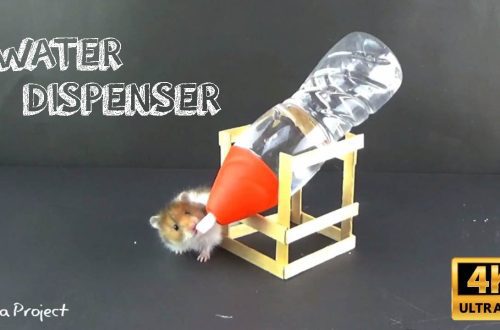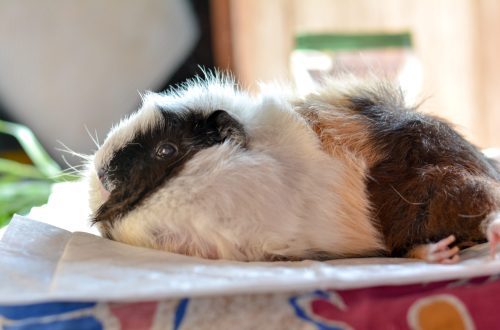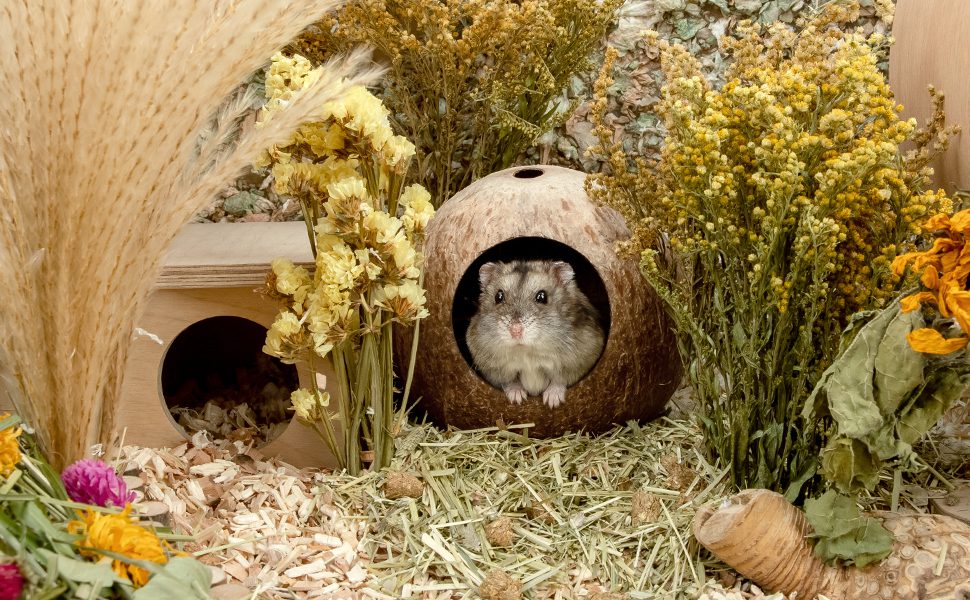
House for a hamster: choice, arrangement, materials (photo)
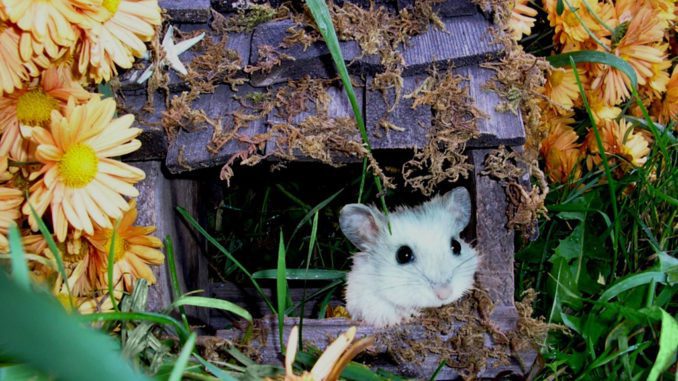
If by house you meant a cage, then we recommend reading our article on cages for hamsters.
A hamster house is an essential attribute of a cage; rodents like to sleep and make cozy nests here. They are sold in special pet stores and hamsters of all breeds without exception love them very much, they arrange bedrooms here. For hamsters, their house is a real fortress. Rodents love to equip it to their taste. You can help your pet by throwing napkins, papers, shavings, shreds, he will choose among the proposed options what suits him best. Cotton wool is also used for such purposes, but only in small quantities, otherwise it will get tangled between the fingers of the animal.
A house, a running wheel and a drinker are the accessories with which the arrangement of the hamster cage begins in the first place.
Contents
How do hamsters like to sleep?
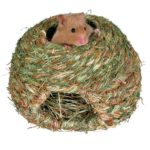 Rodents like to sleep in small shelters: minks, hollows, nests – sleep in a small space is familiar and natural for these animals. Small rooms provide the animal with the necessary thermoregulation and a sense of comfort.
Rodents like to sleep in small shelters: minks, hollows, nests – sleep in a small space is familiar and natural for these animals. Small rooms provide the animal with the necessary thermoregulation and a sense of comfort.
Different models of houses for hamsters satisfy the needs of pets and the aesthetic needs of the owners. Design ideas allow you to turn your pet’s sleeping place into a cage decoration. A house for a Jungarik and a Syrian hamster can be made from:
- ceramics;
- fabric;
- plastic;
- wood;
- vines;
- vegetable fibres.
The accessory is inexpensive, but it may be more interesting for you to make a house for a hamster with your own hands.
House selection
Medium-sized plastic shelters are in demand among buyers. They are durable, but some owners claim that they are poorly ventilated. Another drawback is that the rodent can eat up plastic, because it tries everything on the tooth.
Important! A hamster’s home should be safe. An unstable structure, sharp and protruding corners can become dangerous for the animal. The material of the house in which the hamster will live must be free of toxic impurities that are harmful to the crumbs.
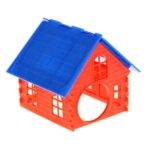
The size of the house directly depends on the size of the pet. The Syrian hamster is larger than the Dzungarian, so the “bedroom” for him should be larger than for the Dzungarian.
A cozy shelter will not only be a good place to sleep, but also protection from drafts, which rodents are so afraid of. Some owners make cardboard houses for their pets, but they are not practical – a hamster will quickly gnaw through such a shelter. Wood and plastic are more suitable materials.
Plastic “bedroom” for a pet
If the hamster lives on paper bedding, he will build a house from improvised materials, it is enough to put him a couple of napkins. But if the baby’s cage is covered with sawdust, you can buy a plastic house. Such models are distinguished by their original design; you can purchase a “bedroom” of any layout, color, shape. On sale there are original models with windows, balconies, bright roofs and other decorative elements. A two-story house with a staircase looks unusual, along which the baby will climb to the second floor. The floors can be connected using a labyrinth. Both options are suitable for Syrians, Jungars and Campbell’s hamsters.
One-story houses are cheaper than two-story ones, they can be purchased at a price of 50 rubles. For the production of plastic houses for a hamster, high-quality material is used, so such products are safe for rodents, easy to clean and sanitize.
Wood is a good choice
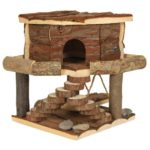
Wood is an environmentally friendly material; in the wild, Khomas often deal with it. The surface of a wooden house is not as smooth as a plastic one, and the rodent likes it more. It is more convenient for him to climb on a rough surface.
Such models can be with a flat or figured roof. Some resemble a dog house in miniature. Village houses look stylish, the design of which involves ice cream sticks or consists entirely of them. The layout is different: the shelter may consist of a bedroom, living room, hallway, one or more beds.
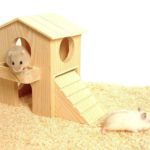 In some models, roofs or other elements are painted; for this, the manufacturer uses special paints that do not fade and do not harm the animal.
In some models, roofs or other elements are painted; for this, the manufacturer uses special paints that do not fade and do not harm the animal.
Interesting: almost all hamster houses are without a bottom, so don’t worry that the rodent will arrange a toilet in one corner and thereby spoil the “bedroom”. To clean the territory of the house, it is enough to lift it.
How much does a wooden hamster house cost? It all depends on the size, but the cost is relatively budget. The simplest models can be purchased for 1-2 USD.
Ceramics as a “building” material
For hamsters, ceramic houses appeared relatively recently. Ceramics is a material that is safe in terms of toxicity, therefore it does not adversely affect the health of pets. Ceramic houses keep heat well, besides, they have a small area, so the animal will be comfortable even during the off-season, when the apartment is not heated.
Products made from this material look presentable and expensive. The only inconvenience is that if the product falls, it may break, so when cleaning the cage, make sure that the house does not fall.
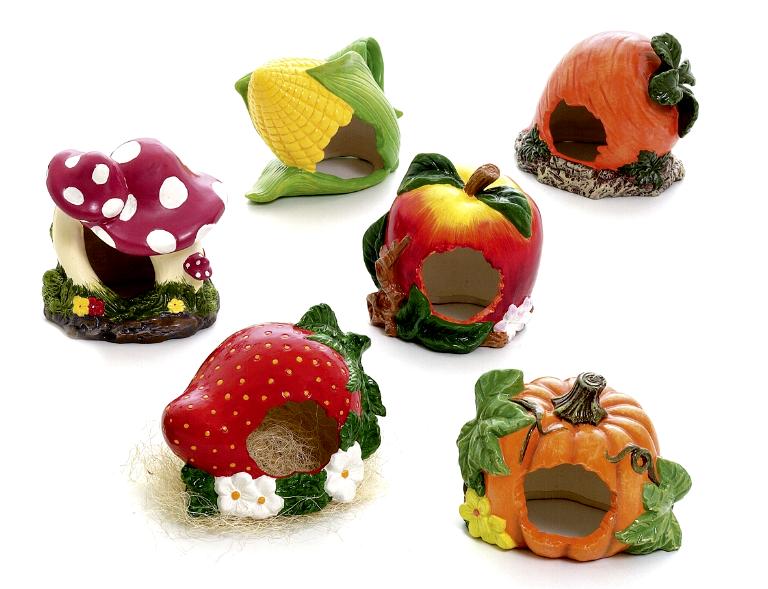
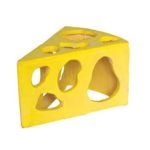 On sale there are many options in color and size. There are houses in the form of vegetables and fruits. A popular model is a ceramic pumpkin with one entrance without a window, which will serve as a safe haven for the animal.
On sale there are many options in color and size. There are houses in the form of vegetables and fruits. A popular model is a ceramic pumpkin with one entrance without a window, which will serve as a safe haven for the animal.
Ceramic “piece of cheese” with numerous holes will become not only a place to sleep, but also an unusual labyrinth. It is without a roof, so the little mischievous will be able to climb the walls and the roof. Such an accessory will decorate the cage and your little pet will like it.
What else can you find in stores?
Syrian and Djungarian hamsters are happy to make nests in wicker houses, they are original, create a feeling of ease, made in Country style. Inside you can lay a piece of cloth or a napkin.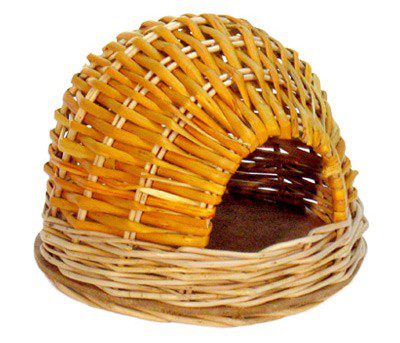
Hammock houses look original. They are hung on a cage, made of soft fabric and foam lining. Soft “bedrooms” can take the form of a sunbed with a hood or a tent. They have a bottom, so you don’t need to put anything inside.
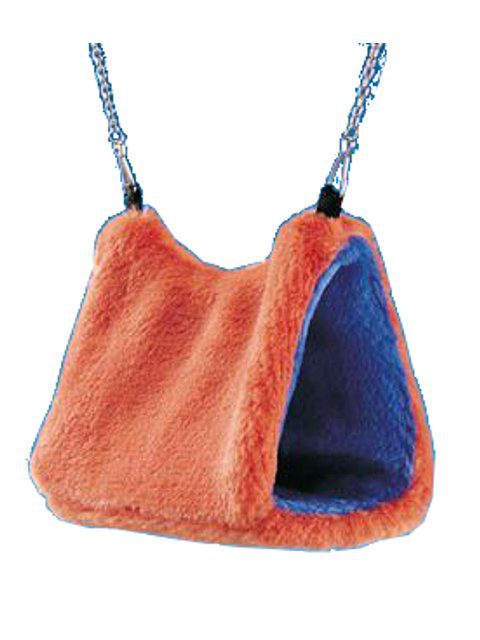
An interesting and practical solution is a house in the form of a carrier. Being in it, the rodent will more easily endure stressful situations, because during travel or cleaning in the cage, the baby will be in a familiar environment.

Having chosen a house, you can start choosing other important accessories for a hamster. If you do not know which ones, then we recommend that you study the list of necessary items for keeping a hamster in the house.
Hamster house – hamster fortress
3.7 (73.33%) 12 votes




